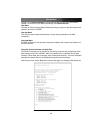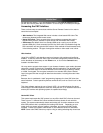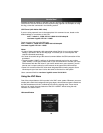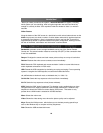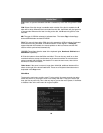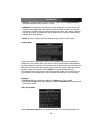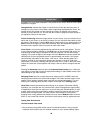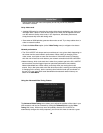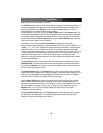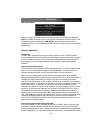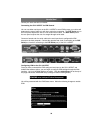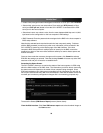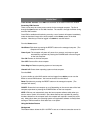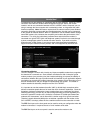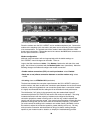
refresh rates stress the video card's quality and do not provide any additional
information or benefit.
Noisy video cards
• A digital KVM works by converting the analog video signals emitted by your video card
into digital data. If there is noise on that signal, then it must also be digitized and sent
over the network. Quality video cards, in our experience, offer better performance
simply because they don't add analog noise.
• Some external KVM switches generate video noise as well. Try to keep cables short, in
order to reduce this effect.
• Enable the Noise Filter option (on the Video Tuning menu) to mitigate noise issues.
Network performance
• The SV1115IPEXT will always send as much data as it can, given what's happening on
the screen and the actual network performance. When nothing is changing on the
video screen, zero bytes are sent over the network. If the whole screen is changing,
then the unit will send as much data as your network connection and VNC client allow.
• Network latency, which is the total time it takes for a packet to get to the SV1115IPEXT
and come back, has the biggest impact on perceived performance and usability.
Network bandwidth has a lesser effect, particularly when just moving the mouse
around. Only a few bytes need to be sent when the mouse is moving (and nothing else
is changing on the screen), but the round-trip-time limits the hand-eye coordination of
the user if it is too great. Both actual bandwidth and measured network latency are
shown in the Main Menu.
Using the Advanced Video Tuning Feature
The Advanced Video Tuning menu allows you to adjust the qualities of the video in your
VNC sessions, and can be accessed by clicking the Advanced button on the Video
Tuning VNC menu. While many users will probably allow the SV1115IPEXT to
automatically configure the video properties, you can use this menu to exercise a great
Instruction Manual
29



